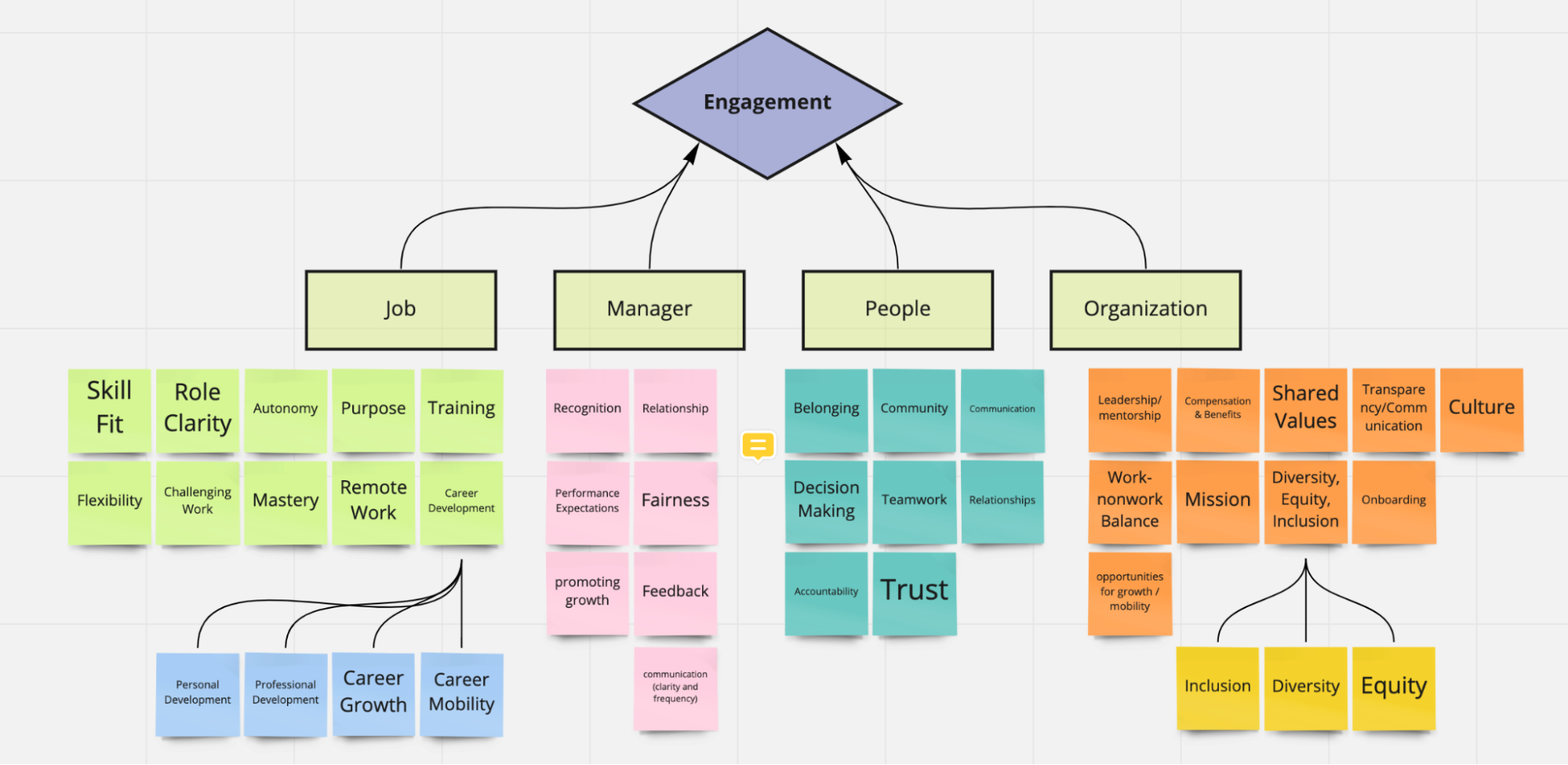PI Diagnose: How questions and categories were developed
PI Diagnose empowers users to collect detailed, actionable feedback about the employee experience. As with any engagement platform worth its salt, Diagnose was built on science and diligent research.
In this article, you’ll learn more about the science behind PI Diagnose and the studies that helped shape the software.
The power of pulse surveys
While planning the latest iteration of PI Diagnose, our development team wanted to provide the same powerful insights existing users are accustomed to, while creating a much more flexible survey experience.
The team quickly landed on a pulse survey experience, in which users can send out shorter, more targeted surveys, each dedicated to a specific JMPO driver (Job, Manager, People, Organization).
Not only does this allow users to finetune the ways in which they measure engagement drivers, but it lets them administer surveys in more frequent intervals (e.g., weekly, monthly, or quarterly). Users can now track how specific elements of the employee experience fluctuate over time—and how those experiences may improve or degrade in response to certain events or actions.
Developing Diagnose’s pulse survey questions
To create Diagnose’s pulse surveys, our science team examined the pre-existing questions for each JMPO factor and came up with “sub-factors,” which provide added insight into the drivers of engagement. In total, the team identified seven to 10 sub-factors per JMPO factor.
For example: When examining questions that measure “Job,” the team identified sub-factors such as role clarity, flexibility, and career development.

Once these sub-factors were determined, we assembled a team of PI experts—spanning science, product, and people operations—to refine this list based on timeliness and potential impact. The final list consisted of the following sub-factors:
- Job: Role Clarity, Meaningful Work, and Career Development
- Manager: Growth, Manager Relationship, and Recognition
- People: Accountability, Communication, and Trust
- Organization: Culture Health, DEI, and Transparency
After finalizing these categories, our scientists wrote a pool of 120 questions (10 per sub-factor). They then administered these questions to a sample of approximately 1,000 U.S. working adults, all working full-time. This sample—which included respondents representing a variety of ages, titles, locations, and industries—was chosen to reflect the greater U.S. working population.
The team examined the results, conducting confirmatory factor analyses to ensure:
- That each question measured its respective sub-factor
- That each question was indeed related to employee engagement
Based on these analyses, the team refined the list of questions and created 12 surveys, each four to six questions in length. From those surveys, the team selected five—Trust, Manager Relationship, Culture Health, Meaningful Work, and DEI—as Diagnose’s first series of pulse surveys.
Note: The Diagnose team eventually plans to release surveys based on all 12 sub-factors. For the latest release, we chose to focus on a smaller list of surveys to gather preliminary data and ensure we’re providing a high-quality experience for our users.
Developing the PI Engagement Pulse
In addition to these new pulse surveys, Diagnose offers a longer, 15-question pulse survey known as the PI Engagement Pulse. The PI Engagement Pulse is based off our flagship 50-item survey, the PI Employee Experience (XP) Survey, also available in PI Diagnose.
Unlike Diagnose’s other pulse surveys, which focus on a specific JMPO theme, the Engagement Pulse includes questions that touch on all aspects of the employee experience.
The Engagement Pulse is based on a sample of 25,000 U.S. adult workers, with respondents representing a variety of backgrounds, ages, and titles, and spanning 17 industries.
Learn more about the PI Engagement Pulse.
To inform us of a typo or other error, click here. To request a new feature, click here.